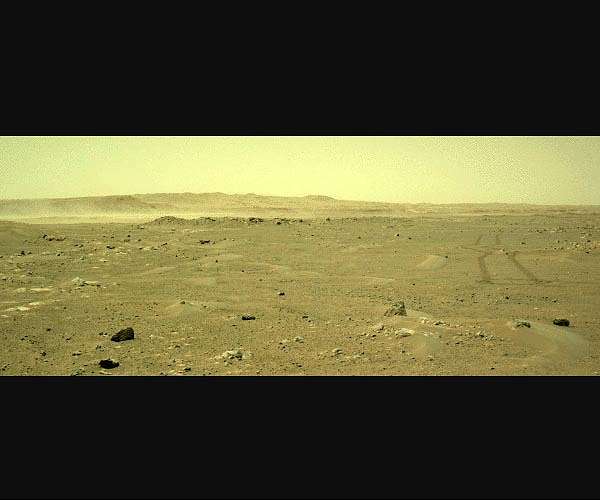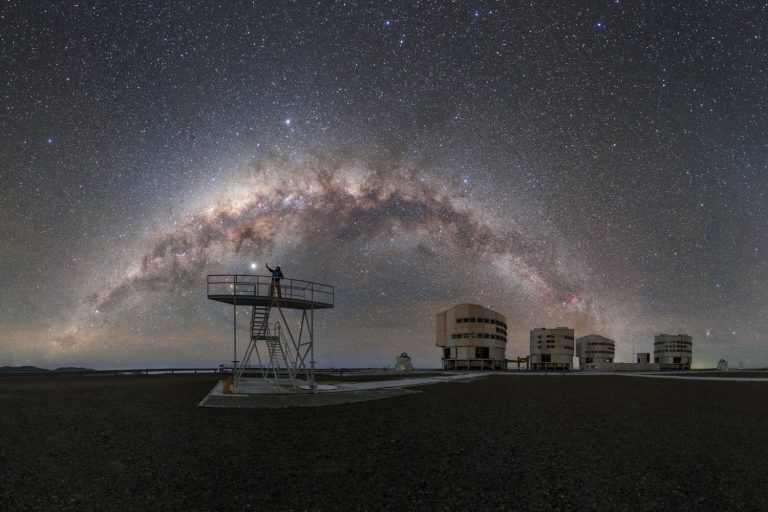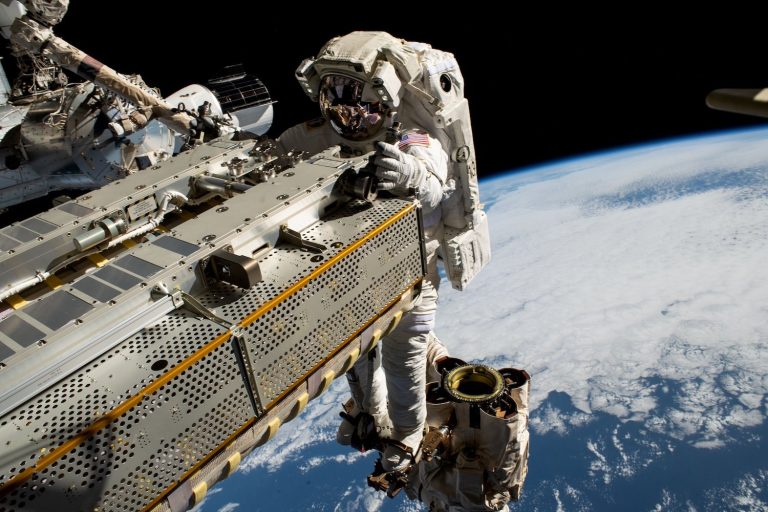
Everything is Dust in the Wind (Image Credit: Space Daily)
Well, not quite. But for scientists like me, who study atmospheric and aeolian (wind-driven) processes, wind-blown dust is extremely important to understand on Mars. Because the Martian atmosphere is so thin, adding even a small amount of dust greatly increases the amount of sunlight absorbed, which greatly affects temperature, which in turn affects the entire atmospheric circulation.
Partly because there are no oceans, and partly because of the strong positive feedbacks between dust lifting and circulation strength, global-scale dust storms can develop on Mars. These storms can block out the sun for weeks and cause huge changes to atmospheric conditions, making it risky to try to land on the surface. Dust is also a risk to optics, machinery, and potentially human physiology.
All of which is why Perseverance carries instruments that are particularly well-suited for observing dust activity and linking it to other environmental conditions, such as winds and surface properties. The Mars Environmental Monitoring Station (MEDA) includes a suite of sensors that can track the passage of dust clouds or dust devils (dusty vortices) around and over the rover.
MEDA also includes sensors that can instantly detect the change in brightness when dust is removed from the surface, which we can link to simultaneous MEDA measurements of winds and pressure drops (indicating the passage of a vortex) to learn how that dust was raised from the surface.
Perseverance also carries the Navcam and Mastcam-Z cameras, which we use to look for dusty phenomena in the region around us. These and other observations are providing us with valuable information on how winds, vortex activity, and dust lifting vary with season and location inside Jezero crater.
For example, while we’ve mostly observed dust lifting linked to vortices, Navcam has also imaged several large dust lifting events driven by strong winds (see image) since we landed at the start of local (northern hemisphere) spring.
These “gust lifting” events, which thus far have only been observed during local spring and summer, could potentially raise as much dust as all the dust devils in combination. And after 313 sols on the surface, in late local summer we became the first mission to observe dust lifting and environmental conditions inside the active dust source region of a regional-scale dust storm – something that is helping us understand how storms begin and evolve.
The largest dust storms typically occur in northern fall and winter on Mars, and after more than 540 sols on the surface we’re still only partway through winter. So we may still experience the effects of another regional- or even global-scale storm before we reach the end of our first year in Jezero crater. I
n writing this blog, I realized it’s been exactly twenty-five years since I first began studying Martian dust storms, as a brand new graduate student. Little did I know that, some day in the future, I’d be lucky enough to work on a mission that’s discovering so much about them.
Related Links
Perseverance Mars 2020
Mars News and Information at MarsDaily.com
Lunar Dreams and more
|
|
Tweet |
|
|
|
We need your help. The SpaceDaily news network continues to grow but revenues have never been harder to maintain. With the rise of Ad Blockers, and Facebook – our traditional revenue sources via quality network advertising continues to decline. And unlike so many other news sites, we don’t have a paywall – with those annoying usernames and passwords. Our news coverage takes time and effort to publish 365 days a year. If you find our news sites informative and useful then please consider becoming a regular supporter or for now make a one off contribution. |
||
|
SpaceDaily Contributor $5 Billed Once credit card or paypal |
SpaceDaily Monthly Supporter $5 Billed Monthly paypal only |
|
MAVEN and EMM make first observations of patchy proton aurora at Mars
Boulder CO (SPX) Sep 01, 2022
NASA’s MAVEN (Mars Atmosphere and Volatile Evolution) mission and the United Arab Emirates’ Emirates Mars Mission (EMM) have released joint observations of dynamic proton aurora events at Mars. Remote auroral observations by EMM paired with in-situ plasma observations made by MAVEN open new avenues for understanding the Martian atmosphere. This collaboration was made possible by recent data-sharing between the two missions and highlights the value of multi-point observations in space. A study of these f … read more



![Watch Live as Bezos’s Big Rocket Attempts Its First Launch [Updated]_678077d9f2781.jpeg](https://w6c4w8m9.rocketcdn.me/wp-content/uploads/2025/01/watch-live-as-bezoss-big-rocket-attempts-its-first-launch-updated_678077d9d33ac-768x512.jpeg)





